Test drive Mazda 6 hatchback since 2010 hatchback
Review of the new generation of the family of cars Mazda Atenza
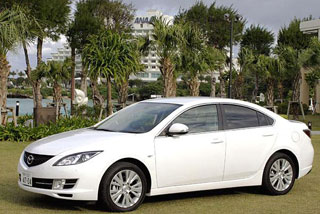 Although a sedan, in some episodes it shows a good sports form
Although a sedan, in some episodes it shows a good sports form The Mazda ATENZA lineup was replenished with a new Sedan machine in the 25EX configuration (with a 2.5-liter engine). Usually, when they say they replenished, it implies that something new has appeared, right? So, in this case, a sensation, or better to say, a breakthrough in neither constructive nor technologically occurred. It’s just that the developers, apparently, decided to get together and make a new car, but in an old way, improving what was good in the previous sedan, but nothing more. In other words, the new Atenza sedan is an advanced old one.
The only thing the current version of the sedan is significantly different from the ATENZA of the previous generation is the engine that it was decided to modify by increasing its working volume from 2,300 to 2,500 cubes. As the representative of the technical group that worked on the project of the new machine explained, this was done with one single goal to improve operational qualities. What exactly was this expressed? Well, if in a nutshell, then in changing the torque curve. That is, the previous engine of 2,300 cm3 developed a capacity of 178 hp, and the peak of its power was at 6,500 roller roller roller roller rollers per minute. In the new power engine, it was reduced (170 hp at 6,000 rpm), however, the torque has increased (earlier 21.9 kg-M at 4,000 rpm., And now 23.0 kg-m with that one the same speed).
It would seem that the paradox: the engine has increased the operating volume of cylinders, and the power has decreased. But on the other hand, you can look at the same phenomenon from a different point of view, and everything will appear in a completely different light. See: the motor was transferred to the type of gasoline Regular (AI-92, AI-95), plus the power peak began to advance at a lower crankshaft speed. Is it good or bad? Well, in terms of saving fuel, of course, it is good, so you can even come to terms with some capacity drop. On the other hand, the engine has increased its torque. Not quite the right expression increased, rather he was forced to grow up. What for? To make it easier to ride at low and medium speed, that is, in that speed range in which the ordinary driver has to move most often.
Yes, of course, a liter torque in this motor does not exceed the coveted line of 10 kg-m, and this is bad, since according to modern concepts such a motor cannot be considered acting with a high efficiency. But if you translate the assessment from the field of theory into the field of practical driving, it turns out that the engine still pulls perfectly. I did not miss the opportunity to ask the aforementioned representative whether it was still possible to squeeze these same 10 kg per liter out of the motor, to which I received the following answer: but we ourselves do not understand that the engine, which has a liter torque below 10 kg-m, cannot be considered completed? And, nevertheless, no matter how hard we tried, we could not go out of us to go to the planned line from us. But we have an excuse for a reduction in power was accompanied by an increase in torque, and therefore, in terms of practical driving, the car won without a doubt. Well, good, at least that the developers themselves understand that they are too early to rest on their laurels. And if so, then there is hope that it will still be good.
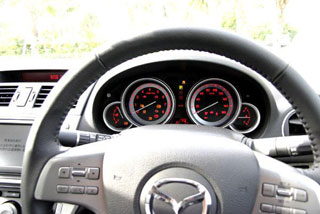 And why, in fact, are we all concerned about the reduction of power? After all, it should be clear to everyone that the main thing here is not a nominal power, but a supply of torque. If someone does not believe, I propose to turn to the experience of the operation of diesel engines with the Common Rail injection system. It is no secret that such a diesel is inferior in power to the gasoline motor (do not forget that its power is low). But the torque is better not to come up with. And it is precisely due to such a large supply of torque that he is able to get out of any situation that an ordinary driver constantly faces. Moreover, he does it no worse than the same car with a gasoline engine. And in order not to return to this topic anymore, I will allow myself to ask a question: what, does the whole experience accumulated during the 24-hour Le-Man races do not prove that without a powerful torque, it is simply impossible to achieve a decent result there?
And why, in fact, are we all concerned about the reduction of power? After all, it should be clear to everyone that the main thing here is not a nominal power, but a supply of torque. If someone does not believe, I propose to turn to the experience of the operation of diesel engines with the Common Rail injection system. It is no secret that such a diesel is inferior in power to the gasoline motor (do not forget that its power is low). But the torque is better not to come up with. And it is precisely due to such a large supply of torque that he is able to get out of any situation that an ordinary driver constantly faces. Moreover, he does it no worse than the same car with a gasoline engine. And in order not to return to this topic anymore, I will allow myself to ask a question: what, does the whole experience accumulated during the 24-hour Le-Man races do not prove that without a powerful torque, it is simply impossible to achieve a decent result there? ATENZA of a new generation is just equipped with such a motor (2,500 cm3, gasoline, of course!), In which the rate is made precisely for a large torque, achieved by a relative reduction in power. And what? And the fact that when you sit at the wheel, in some situations you simply forget that you are managing a sedan, he has a good sports befield. Yes, I did not make a reservation: not only me, but the rest of the testing races said the same thing, they say, sometimes it seemed to them that this was not a sedan, but the most athletic 5-door hatchback atenza! It is painfully good, they say, at high speed this sedan is pressed to the road just a class.
Of course, it would be completely wrong to say that the whole thing is only in the modified engine. After all, a body of type sedan still remains with its disadvantages, no matter what the motor put on it. But the developers have matured a plan: they calculated where the body has the weakest places (and this is just in the middle), and strengthened these places with metal sheets with high and ultra -high stretching resistance. After that, of course, the handling became better, although on the other hand, what is controllability without accurately selected geometry for controlled wheels?
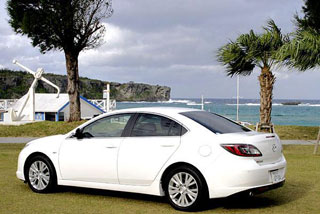 The operational qualities of the advanced body and suspension are simply excellent
The operational qualities of the advanced body and suspension are simply excellent I don’t know, maybe due to the fact that the hardness of the body was increased, maybe because of something, but I will say one thing: the suspension of the new car began to act in almost an ideal way, and the wheels, so they simply stick on the go To the road. And at the same time, it is only worth the driver to turn the steering wheel, like these seemingly sticking to the asphalt of the wheel with amazing lightness and accuracy bring the car to the newly selected course. It is clear that in such an atmosphere, when on the one hand the road attracts a car as a magnet, and on the other, the steering is acting accurately and verified, the driver has a feeling that the car controlled by him has an inexhaustible supply of stability.
What changes in the chassis led to such positive results? First, turn to the suspension of the front wheels. It should be noted, as before, it is built on double parallel transverse levers. At the same time, double ball supports used earlier, in a new generation sedan, gave way to ordinary, that is, single. They say that in this way it was possible to give the suspension more transverse stiffness. Well, but that is curious: those positive qualities, for which, in fact, these double ball supports appeared in the pen -generation sedan, did not disappear. But in order for the suspension to retain its previous potential,, as the representative of the technical group explained, to fix it to the body not in 4, but according to the 6-point scheme. And it was precisely this circumstance that made it possible to ensure that the wheels accurately performed steering commands, and on the other, to improve the pressing of the wheels to the road.
Now about the rear suspension. The rear wheels, it should be noted, as before, they are suspended through an e-image system of longitudinal levers developed by Mazda engineers. Since, as already noted, work on the new sedan brought, in fact, to further improvement of a similar model of the previous generation, it was decided to do the following with the rear suspension. Firstly, to increase the installation angles of shock absorbers and finalize the levers so that the suspension presses the wheel with the previous force to the road and forces them to follow the irregularities of its coating. At the same time, it was necessary to ensure that under no circumstances the back of the car would not lose stability. Yes, and also: it was decided to move the dimensions of the longitudinal levers to the body by 25 mm, and the mounts of the mounting by size are increased from 60 to 70 mm. What did it give? When braking, the rear part, if it rises, is not to the extent that it was observed earlier, plus it was possible to quite successfully coordinate the dynamic course of the front and rear suspension. As a result, the riding became more comfortable, which is greatly facilitated by the good security of the salon from the so -called road noise.
These changes made to the new ATENZA sedan make themselves felt constantly. Take, for example, the steering, which I called above the verified. But this one definition alone is clearly not enough for the reader to understand what exactly I mean. Imagine the car approaches the bend, I take my eyes to the direction where I need to turn, and fix it at the point that I choose as a guideline. At the same time, I turn the steering wheel, and the car, of course, turns to the side. And suddenly it begins to seem to me that the car is turning by itself, pushed by my inner energy, and not the steering wheel, which I naturally continue to act. Yes, of course, to some extent, this can be explained by a relatively small angle of rotation around the longitudinal axis. By the way, against the background of all the other cars that I had to experience, this car has really small, and even without a discount on the fact that it is a sedan. That is, the speed on the bend is relatively high, and the car does not roll, that's all! Due to the suspension made in the suspension design, the car at the bend shifts aside surprisingly smoothly, and plus everything happens in the literal sense without unnecessary noise. No, when the time comes, the wheels begin to screech, not without it, but before this moment there is no alarming symptoms, no noise turning out of an abundant tire, which, as a rule, anticipates and anticipates.
Although the car I described is a sedan, you can’t call it soft suspension. On the contrary, it is quite tightened, and nevertheless, when uneven is under the wheels, it does not knock, which is understandable does not allow the hardness of the body. It is only heard, you know, such a slap, which, apparently, is connected with the fact that the wheel is playing out, and then again returns to its place. At least the sound that penetrates the salon does not irritate or tire, simply informs the driver about the condition of the road surface, and no more.
It is only necessary to press a little on the accelerator, and the car, without hesitation, breaks into acceleration, and the more intensively the stronger the gas pedal is pressed to the floor. True, to argue that the speed will increase at the lightning speed will be a clear bust, but if you say at a high pace, why not? The main thing, however, is that at any initial speed speed, a driver who suddenly needed to accelerate (for example, to overtake the car walking in front) will hardly remain disappointed. And, therefore, he can drive a car, planning his maneuver in advance, being sure that if he suddenly needs to add a little, he will succeed.
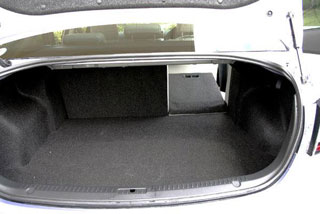 The brakes are also so perfect that you slow down without hesitation
The brakes are also so perfect that you slow down without hesitation When it is said that, they say, the car is safe, that it is stable on the go, it is assumed that it is equipped with effectively active brakes. No, the fact that the brakes, ultimately, should be reliable and be able to cope with any speed that the car they serviced can itself, of course. The question is different: how exactly the inhibition process should flow, or, in other words, how well the driver, who needed to slow down, feels with what force should be burned for the brake. In a word, one of the most important inhibitory factors is how well the driver feels the brake pedal.
The first thing you usually pay attention to when you begin to evaluate the operation of the brake system is the free stroke of the brake pedal. In other words, which path should make the brake pedal until the moment when the pads begin to cling to the brake discs and increased hydraulic pressure will occur in the system. So, I can say that the new Atenza sedan is very small, so you just need to touch the pedal, and immediately feel that the process has gone. Of course, it is advisable for the driver to know exactly how much the pads are pressed on the wheels, so as not to imprison and not not. And here it should be noted that, despite its small free move, the brake pedal in each individual episode is very, I would say, informative. And if so, then no matter what the driver conceived, he always feels how strongly or, conversely, it should be slightly pressed on the pedal. And what is surprising: it took me very little time to get comfortable, and in the future all my decisions on how to slow down, made, I am not afraid of this word, at a subconscious level.
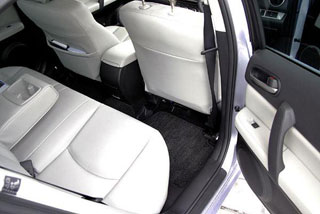 The new Atenza sedan is equipped with a 5-speed automatic box. True, if the car is on all-wheel drive, then the box is 6-speed, but in any case, it allows you to switch and manually. Plus, on the machines of some categories, this can be done from the steering column using manual switches installed there. To transfer the box to manual control, you should take up the lever and take it from position D to the right (position m). After that, you can consistently switch from one gear to another. By the way, in order to switch to increased speed, it is necessary, as is customary in Mazda machines, pull the lever over yourself. Such a switching scheme personally seems to me more natural, because it is not for nothing that it is used in all racing machines.
The new Atenza sedan is equipped with a 5-speed automatic box. True, if the car is on all-wheel drive, then the box is 6-speed, but in any case, it allows you to switch and manually. Plus, on the machines of some categories, this can be done from the steering column using manual switches installed there. To transfer the box to manual control, you should take up the lever and take it from position D to the right (position m). After that, you can consistently switch from one gear to another. By the way, in order to switch to increased speed, it is necessary, as is customary in Mazda machines, pull the lever over yourself. Such a switching scheme personally seems to me more natural, because it is not for nothing that it is used in all racing machines. If the driver moved for some time in automatic switching mode (D), and then released the gas pedal and switched to the M mode, the scoreboard will show the 4th speed, and the engine will begin to actively slow down. This method of reset speed can even be useful when moving along a high -speed highway. After all, if everything should be done as it should, you can slow down without using the brake. For example, you move at a high speed and suddenly you see that the distance to the front car was gradually decreasing. You can, of course, press the brake, but you can simply change the position of the transmission lever, and this will be enough. Agree that in most similar cases the driver will choose the second option.
 By the way, strange things happened with this box, and, both on a high -speed highway and on an ordinary road, where, as you yourself understand, the speed was not at all the same. And it was like this: I walked along a high-speed highway at a constant speed of 80 km/h, then, without releasing the accelerator, transferred the transmission control lever to the m. If I released the gas pedal, the 4th speed should have turned on, and so on The scoreboard was highlighted. Okay, I move manually to the 4th speed, but then I feel that I was crossing, and I immediately decide to go back to the 5th. I pull the lever nothing, I pull it again, and only then I see that everything is in order, the speed switched.
By the way, strange things happened with this box, and, both on a high -speed highway and on an ordinary road, where, as you yourself understand, the speed was not at all the same. And it was like this: I walked along a high-speed highway at a constant speed of 80 km/h, then, without releasing the accelerator, transferred the transmission control lever to the m. If I released the gas pedal, the 4th speed should have turned on, and so on The scoreboard was highlighted. Okay, I move manually to the 4th speed, but then I feel that I was crossing, and I immediately decide to go back to the 5th. I pull the lever nothing, I pull it again, and only then I see that everything is in order, the speed switched. Another case happened to me on an ordinary road. I needed to lose speed, I released the accelerator and switched to manual mode. I see that four was displayed on the scoreboard, that's right. I move manually to the 3rd speed, then to the 2nd, and I see that I will stop so completely. I pull the lever on myself to return to the 3rd transfer of any result. I pull the result again. You won’t believe it, but I managed to switch only on the 5th attempt! Agree that this, so to say, the transmission reaction may well indicate that the switch is faulty. It is clear that at the end of the trip, I addressed the corresponding question to the representative of the technical group, and he says to me: it cannot be! Although, okay, I will return to Hiroshima, it will be necessary to check, perhaps you will have to
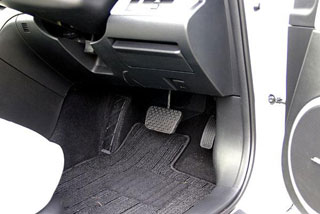 then remake. That, I would say, an unpleasant episode. Of course, it is possible that I acted somehow wrong, maybe without waiting for a low gear to turn on, I again turned on increased speed, hence the problems. However, after all, everything can happen in life, but what kind of control system it is, which can fail so easily. Disorder!
then remake. That, I would say, an unpleasant episode. Of course, it is possible that I acted somehow wrong, maybe without waiting for a low gear to turn on, I again turned on increased speed, hence the problems. However, after all, everything can happen in life, but what kind of control system it is, which can fail so easily. Disorder! Well, oh well, in conclusion I will tell you how I controlled with the most expensive machine from a number of 25EX, that is, with a sports passenger station wagon (Sport Wagon). As you know, although it was a passenger, but the shape of the body is classic, with a hood. Therefore, when I got behind the wheel, I had the feeling that I was inside the same sedan. There was the same silence in the cabin in the sense that the road noise inward almost did not penetrate. While I was driving calmly, the bulky rear box did not remind anything of my existence, and the illusion that I was in the sedan was complete. But when I decided, as they say, to attack the turn at high speed, it became clear to me that the car was not entirely predisposed: the tires had not yet begun to screech, and it began to lose control. Of course, on this car (nevertheless, the station wagon!) Nobody will drive like that, so I have noted the unpreparedness to quickly overcome the turns of this non-binding remark. Just after a related sedan, which really demonstrated amazing stability, I thought that the station wagon (after all) could behave similarly. But, unfortunately, this did not happen.
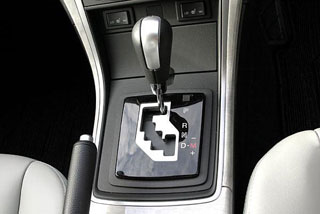
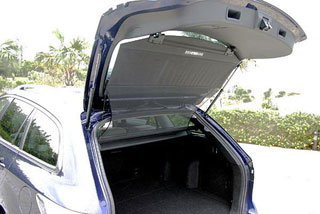
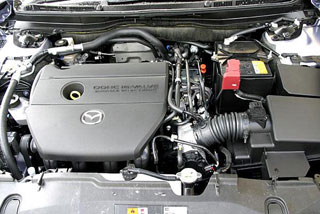
Let all ATENZA vehicles help out as the car does on 18-inch wheels!
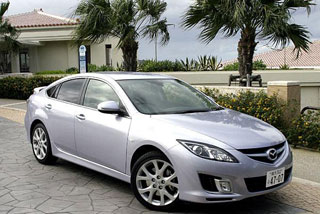 In the conclusion of my test program, I was driving the 5-door hatchback Atenza Sport with a 6-speed manual gearbox. My interest in this car was not at all accidental, since I was sure that the controllability of the manually switched speed box, and the torque of a modified engine with a working volume of 2.5 liters is easier to understand and evaluate when the transmission is connected with the motor, which is called, which is called , directly.
In the conclusion of my test program, I was driving the 5-door hatchback Atenza Sport with a 6-speed manual gearbox. My interest in this car was not at all accidental, since I was sure that the controllability of the manually switched speed box, and the torque of a modified engine with a working volume of 2.5 liters is easier to understand and evaluate when the transmission is connected with the motor, which is called, which is called , directly. Well, the fact that this engine was redone with the expectation of an enlarged torque even to the detriment of power, I already said. And if someone still doubts the correctness of such an approach, I would recommend that you drive the hatchback and drove a little, as I did. And I’m sure that any person who knows a lot about sports driving will say: yes, the lightness with which this car is gaining move, moving at low and medium speed, really deserves the highest rating! True, do not forget that the engine is an engine, but without proper operation of the suspension, it is also impossible to enjoy the speed riding. Whenever I tried to go through another turn with maximum speed, I thought about that. In fact, the fact that the engine can sharply add, this, of course, is fine, but it may not be of anything if the machine does not have the right margin of stability.
By the way, after this trial trip, I take me seriously that the speed box installed on this car according to such a criterion as a feeling of switching is in the very first place among the cars of domestic (Japanese) production. This is not to say that the lever had a perfectly short move, but in the speed range in which I had to move, the transition from one transmission to another seemed almost instantaneous to me. And at the same time, to switch, not to the lever
 it was required to make any noticeable effort, that’s the main thing! But the lever with this, I would say, the mood is an indispensable thing when you control the car in a sports manner, right? True, I had one small remark, and it applies to the spring that fixes the lever in a neutral position. It seems to me that here the developers were clearly rebuilt, making it painfully hard. In fact, in some sled episodes it seemed to me that it would be better without her. I will say this: if I chose the car for myself, I would definitely ask it to remove it. Indeed, in all other machines that I managed to try on that day, there were no such spring clamps, and it seems to be nothing. In a word, if your hand does not tremble, if it is stuffed (you need to train more often!), From this spring there is no benefit except harm! Or am I wrong?
it was required to make any noticeable effort, that’s the main thing! But the lever with this, I would say, the mood is an indispensable thing when you control the car in a sports manner, right? True, I had one small remark, and it applies to the spring that fixes the lever in a neutral position. It seems to me that here the developers were clearly rebuilt, making it painfully hard. In fact, in some sled episodes it seemed to me that it would be better without her. I will say this: if I chose the car for myself, I would definitely ask it to remove it. Indeed, in all other machines that I managed to try on that day, there were no such spring clamps, and it seems to be nothing. In a word, if your hand does not tremble, if it is stuffed (you need to train more often!), From this spring there is no benefit except harm! Or am I wrong? But what was not in other ATENZA cars, and what sincerely pleased me was a completely different steering wheel. What do I mean here? I explain: from the very beginning it seemed to me that during rotation the resistance of the steering wheel was minimized here, but on the other hand, there is no feeling that this ease arises due to the active help of the steering amplifier. No, everything flows in a completely natural way, as if the controlled wheels are shod in narrow, shearing tires, and the suspension is designed in such a way that only the axis of rotation is slightly moved in a vertical plane, as the load on the axis increases sharply, and as a result the wheels go so, Like a broken rut. And when the controlled wheels hold in this way, then even if the steering wheel was excessively twisted at the bend, there is no impulsive desire to immediately put pressure on all the brakes. In this case, it was enough to release the accelerator, slightly drop the speed, and then start picking up the gas again, continuing to earn extra money with a steering wheel. And, you see, everything worked out, and there was no braking.
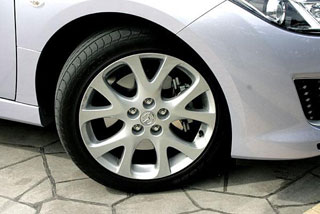 On the other hand, this does not mean that a possible sharp inhibition, as well as a sharp acceleration, will require the driver of active part -time work by the steering wheel. It didn’t happen at all, you can calmly turn the steering wheel in the right direction, and the car obediently continue moving along the necessary trajectory. And okay, there would be a steering wheel, similar to the RX-8, where, as you know, an electric amplifying engine sits directly on the axis of the steering rack, and besides, it is without toxic brushes. But here, after all, it seems, everything is like on other ATENZA models, but look, what's the difference!
On the other hand, this does not mean that a possible sharp inhibition, as well as a sharp acceleration, will require the driver of active part -time work by the steering wheel. It didn’t happen at all, you can calmly turn the steering wheel in the right direction, and the car obediently continue moving along the necessary trajectory. And okay, there would be a steering wheel, similar to the RX-8, where, as you know, an electric amplifying engine sits directly on the axis of the steering rack, and besides, it is without toxic brushes. But here, after all, it seems, everything is like on other ATENZA models, but look, what's the difference! Naturally, I did not fail to take the opportunity and asked my question to the representative of the technical group engaged in the development of the machine. At first, he did not find what to answer, but then, apparently, he gathered his thoughts and explained that, they say, it was originally decided that the hatchback would stand on 18-inch tires, but only unlike other models, these tires are more width. It is clear that he continued that if the width of the tires is larger, the controlled wheels turn less willingly. Then, in order to compensate for the negative consequences of the transition to wide tires and achieve the previous lightness of rotation of the steering wheel, I had to reprogram the steering amplifier control unit, and the result was what happened and what you turned to. Yes, but then I have an equally important question, more precisely, bewilderment. If everything is explained only by changing the control program, and the steering wheel, nevertheless, began to act much more naturally than in other ATENZA machines, then why not in this way to reprogram everyone else? Personally, I would only be for, if all cars, according to the subjective sense of steering, were brought, so to speak, to a single denominator. I expressed such a wish, however, whether it will subsequently be taken into account this question.
Source: AGN





